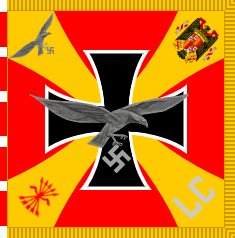Guernica: birthplace of a new form of modern warfare
On Monday 26th April, 1937 the small town of Guernica in the Basque region of Spain was ruthlessly destroyed by Hitler's Condor Legion and Mussolini's airforce. The entire operation was not executed as a strategic airstrike against military targets, it was purely an exercise in terror. The projectiles dropped on the town were aimed to create the greatest number of civilian casualties possible. A combination of incendiary and and explosive bombs rained down on the residential section of the town, which was mainly constructed of wood. To prevent the flames form being extinguished, the fire station and water tanks were the first targets. Terrified civilians fleeing the slaughter were herded back into the inferno by the machine gun strafing of German fighter aircraft. Furthermore, Monday was market day in Guernica a factor that ensured maximum casualties.
 |
| Bombing of Guernica |
Guernica was not a military target, its war industries lay outside of the town and were untouched by the advanced German bombers. The only objective was the demoralisation pf the Spanish Republican cause, a tactic tried in vain against the resolute British in the Second World War. Due to the immediate international backlash against this act of murder, the rebels immediately denied the atrocity, claiming that Guernica had been dynamited by the Basques themselves. The wisdom of blocking the retreat of the Basque army by placing a massive human catastrophe in their path is definitely dubious. Nor did they ask themselves why dynamiters allegedly carried out a scorched earth policy left the munitions factories and a crucial bridge intact. The claim that the bombers aimed for the bridge is also bogus; incendiary bombs are ineffective against concrete, and the bombers used did not have sufficient precision to hit such a target, they were suitable only for area bombing.
 |
| Emblem of the German Condor Legion |
The atrocity was so poignant that Pablo Picasso, the greatest artist of the age was persuaded to abandon artistic neutrality and identify himself with the cause of the Spanish Republic. In 1937, he immortalised Guernica as the place where a new and horrific modern warfare came into being.
 |
| Picasso's Guernica |
Comments
Post a Comment